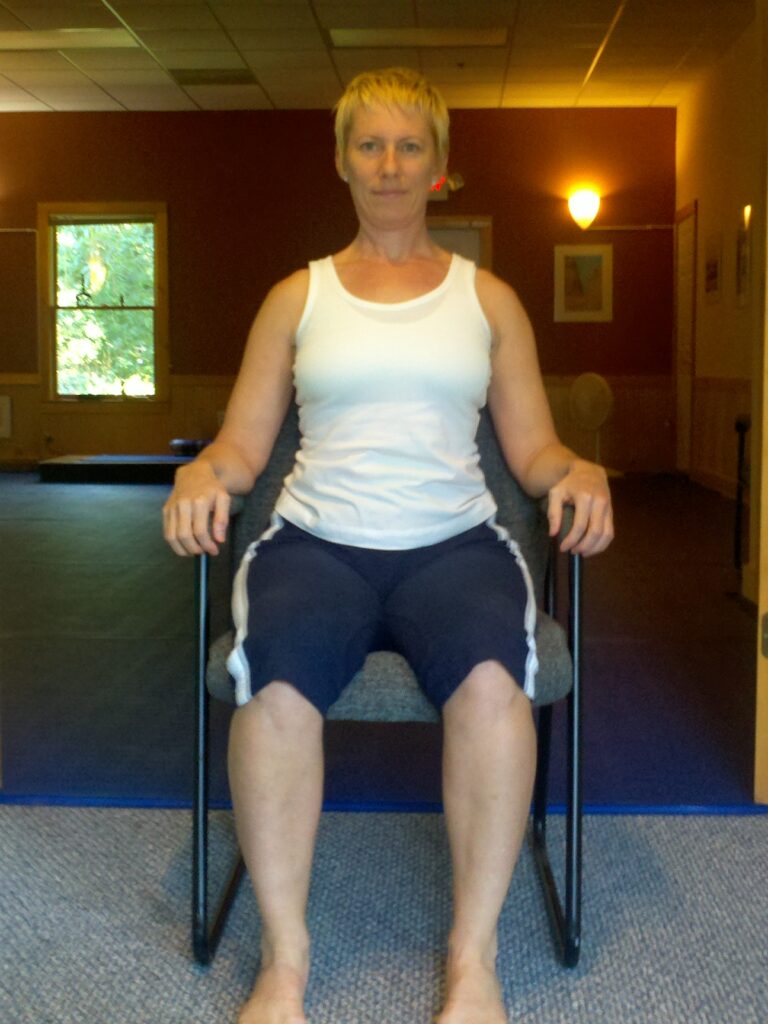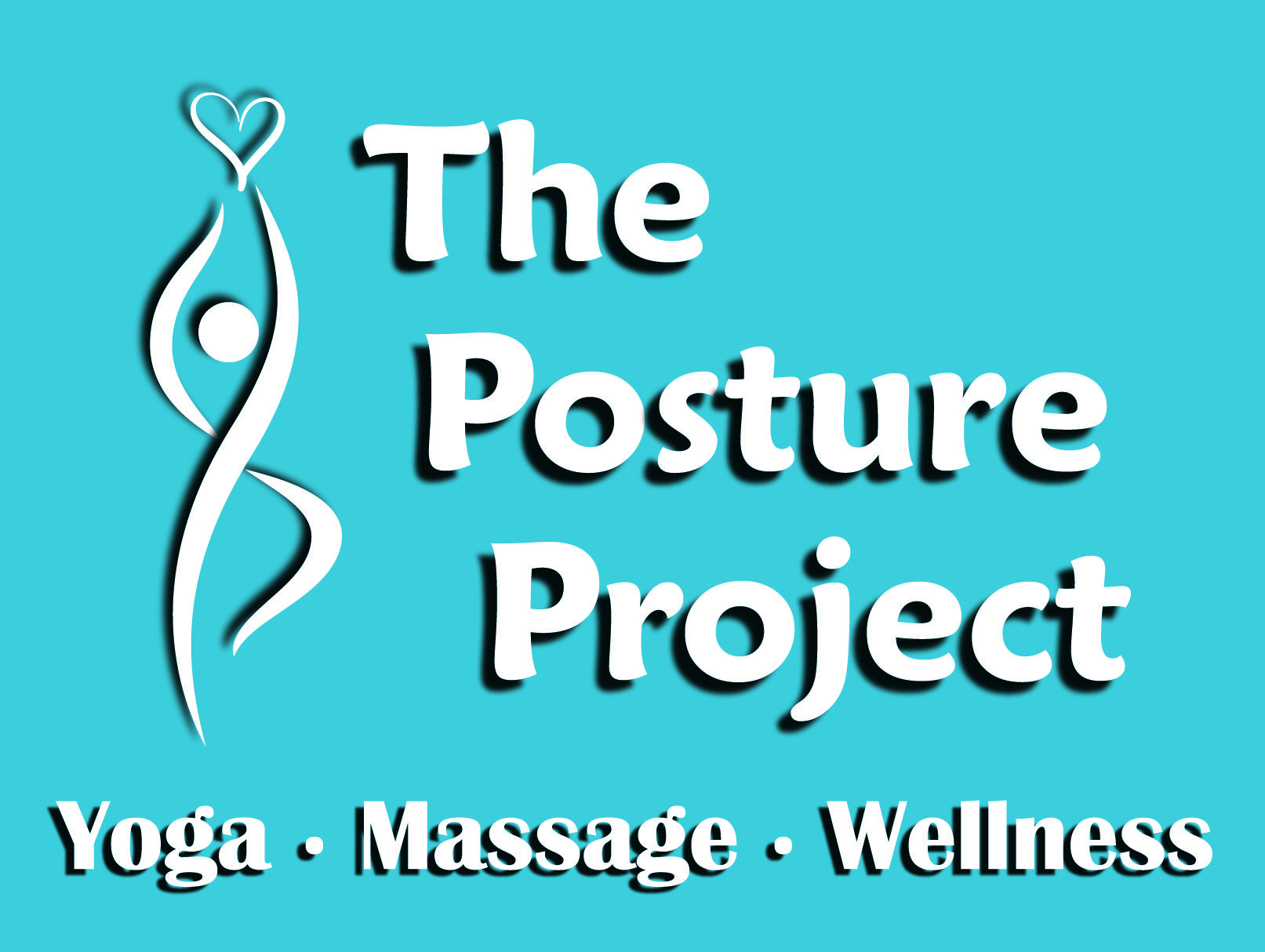
Do you catch yourself slouching while sitting either at work or home? Most people do, including myself. It takes a lot of mental focus to stop slouching and maintain a perfect sitting posture.
The sitting posture
The sitting posture is one of the most problematic side effects of an office job. More people sit all day than do manual labor. Most of our yoga and massage clients complain about the effects that sitting has on their bodies, such as tight hamstrings, neck and shoulders. They also complain of low back pain.
You see, when you sit your body shortens in the abdomen, neck, shoulders and the backs of the legs. This creates a tightness in the connective tissue, muscles, joints and the organs in those areas of the body. As the muscles of the abdomen tightens, they prevent the back muscles from working when you try to stand up. The abdomen is locked down and can't get the length to allow the back to contract.
The hamstring muscles get tight and won't allow the legs to straighten out, which pulls on the sits bones at the base of the hips. This, in turn, will pull on the low back.
The sitting posture can also pull the shoulders and head forward as well. As you sit and the abdomen shortens, the chest has a hard time lengthen as you try to stand. The neck has a hard time moving back into proper position as well.
Sitting can also slow digestion and increase stress levels. This posture is also dangerous for your brain.
What happens while you sit
As you sit, your breathing gets more shallow which causes the small muscles in the neck to tighten as they try to pull the rib cage up so you can breathe. Your breath gets more shallow and this lack of breathing lessens the amount of oxygen that gets to the brain. This lack of oxygen can contribute to less productivity, foggy headedness or even lightheadedness. Prolonged sitting could contribute to even more dangerous health problems such as heart disease and stroke.
What is the Diaphragm?
The Diaphragm is a mushroom shaped muscle that sits at the base of the ribs. It attaches to the inside of each of the lower ribs. It also provides a barrier to the chest cavity so the lower organs can stay in the abdomen when you are in an inversion position.
The diaphragm aids in digestion, breathing and stress relief. This muscle expands down into your abdomen as you take a deep belly breath and contracts as you breathe out.
This action allows the lungs space in the chest cavity to fill as you breathe in and empty as you breathe out. As the diaphragm expands, it gently massages your small intestine to help increase digestion. It also massages your adrenal glands which activates the parasympathetic nervous system, which, in turn, lowers your stress levels and balances out your blood pressure. Deep breathing can literally change or prolong your life.
It is important to take breaks throughout the day and stretch and breathe. There are many stretches to help reverse the sitting posture at home, but here is a simple fix to stop slouching and improve your health, that you can do at your desk while you work.
Diaphragm Release
Releasing, or expanding your breathing diaphragm, is a wonderful way to reset the imbalances in your body that the sitting posture creates. This simple way to stop slouching also helps with;
- Shortness of Breath
- Shallow Breathing
- Mid-Back Pain
- Foggy Head
- Stress
- Constipation
- Neck and Shoulder Pain
- High Blood pressure
You can practice this diaphragm release while at work, home or in your car to help you find a deeper breath. The more you practice, the better you will feel. Here are the steps;
1. Sit in a chair with arms with your back upright. (i.e.- not leaning into the chair)
2. Your feet should be hip width apart and flat on the floor with ankles straight down from knees. This positions your body in a symmetrical balance.
3. Next, push your elbows & forearms into the chair arms while taking 5-10 long, slow deep breaths and then release your arms.
This forces you to breath into your diaphragm which is your main breathing muscle.
Because you are holding down your shoulders, you cannot breathe shallowly into your upper chest. All the air is forced into your lower ribs where your diaphragm attaches. This stretches your diaphragm relieving tension around the low ribs all the way around your body (mid-back).
This breath also relaxes your neck muscles that were tightened from trying to pull the rib cage up to allow you to breathe. You get more oxygen to your brain to clear your head which wards off more serious health problems.
A released diaphragm allows your rib cage to lift and helps you sit up taller because it is not pulling as hard on the ribs. In other words, you can breathe better and stop slouching with ease!
If you have any of the symptoms listed above, do this 2-3 times a day to help yourself feel better! Remember, you can do this at work, home, or in your car.
We have some great videos to help you feel better on our youtube channel here
Until next time!
Shalan
Click here to learn more about The Posture Project Yoga and Massage studio or Shalan Hill
